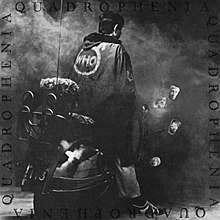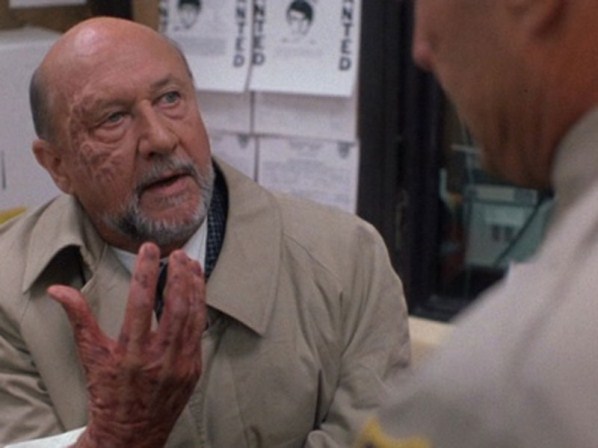Here are some random reviews of a few movies I had recently seen.
Collateral, Michael Mann, 2004.
Michael Mann is known for his film noir/gangster films such as Thief and Heat as well as his 1980s postmodern television show Miami Vice. Collateral fits nicely with these clutch of films. The story occurs during one night and is about a taxi driver (Max) who is forced to drive a hit man (Vincent) throughout Los Angeles. The films stars Jamie Foxx (Max) and Tom Cruise (Vincent), in one of his finest performances.
Collateral is shot in high definition, which was kind of big deal when it came out in 2004. Although there were slew of films that had been shot on digital video, this made a splash for its big budget and big stars. Collateral demonstrates that digital video can depict vast landscapes through deep focus photography. This is, in particular, what stands out in Collateral: namely, the film's emphasis on empty spaces of Los Angeles in order to create atmospheric tension. I was reminded or Alex Cox's cult masterpiece Repo Man, where cars traverse lonely highways, bathed in a panoply of washed out neon colors of Los Angeles (see image below). Of course, one of the great filmmakers to depict empty space and loneliness is Italian filmmaker Michelangelo Antonioni.

There is also great use of popular music and score in Collateral. Mann is known for his hypnotic and majestic use of the synthesizer. And it all works here. An element that I have been focusing on in my own research is the soundtrack or popular song as narrative digression. We found many moments of musical digressions in Collateral in order to build atmosphere and moods that reflect character interiority. This is a way of moving the narrative without overt causality.
Lastly, the final moments of the film is classic Michael Mann, where Vincent philosophizes the code or life of the gangster. This scene, in particular, calls our spectatorship into question. We begin to question Vincent's motivates as a killing machine--even sort of feel bad for him. It returns us to a question Vincent poses to Max earlier in the film: "Millions of galaxies of hundreds of millions of stars and a
speck on one in a blink...that's us. Lost
in space. The universe don’t care about you. The cop, you, me? Who notices?"
Drunken Angel, Akira Kurosawa, 1948
Drunken Angel is widely known as Kurosawa's first collaboration with Toshiro Mifune, an actor he made many movies with. The film tells the story of gangster, Matsunaga (part of the yakuza), played by Mifune. Matsunaga is diagnosed with tuberculosis by an alcoholic doctor and will die if not treated. The doctor cares about Matsunaga and believes he can both cure his disease and free him from his gangster life. Matsunaga, however, is stuck between these two worlds, uncertain if he can truly escape the yakuza. But does he really have a choice or is it his fate to die? Of course, fate is a central tenet of film noir.
The setting of the town is located near a contaminated lake, possibly the cause of illness among its inhabitants. One of the most striking scenes in the film is Matsunag's ocean dream, where he encounters his own death, filmed hauntingly in slow motion. Kurosawa seems to be channeling German Expressionism in this sequence--especially Mifune's excessive gestures and over the top expressions. One wonders if Ingmar Bergman was influenced by this scene when he shot the fantastic dream/death sequence in Wild Strawberries? This is an extremely fine film made by Kurosawa during the time when U.S. had occupied Japan post WWII. Mifune's performance is outstanding and does a terrific job embodying the character of Matsunaga.

Mother Night, 1996, Directed by Keith Gordon
Mother Night was released during the surge of Independent cinema in the 1990s. This is a gem of a film and surprisingly not mentioned among the great films of the 1990s. Mother Night is a story about Howard W. Campbell Jr. (Nick Nolte), an American Nazi playwright living in New York city. We find out that Campbell was a spy and sent undercover to transmit special codes during his Nazi propaganda speech during his radio program. Only a few people know about Howard. One person in particular was an agent of the U.S. War department, which Howard refers to as his "blue fairy godmother" played by John Goodman. Howard chooses to live in New York City after the war. After meeting his neighbor, George Craft (Alan Alda) things become complicated for Howard, eventually leading to his imprisonment in Israel. The film moves back and forth through time, during Howard being locked up in a jail in Israel (filmed in black and white) and the recounting of his life until his imprisonment.
This is an intentionally slow moving film with fine performance from Nick Nolte, John Goodman and Alan Alda. Like the novel, the film brings forth complex questions of morality, with a bit a black humor.
As a random note, although the film closely follows the book's narrative, it does not
attempt to match the film's aesthetics to Vonnegut's
fragmented writing style. I always felt there is a bit of the absurd
in Vonnegut's brilliant prose. And I believe there has only been one
filmmaker who captured the absurdity that Vonnegut depicts
in his works - and that is George Roy Hill and he is dead. For this
reason, I also highly recommend Slaughter House Five - one of Hill's best films alongside The World According to Garp.

























